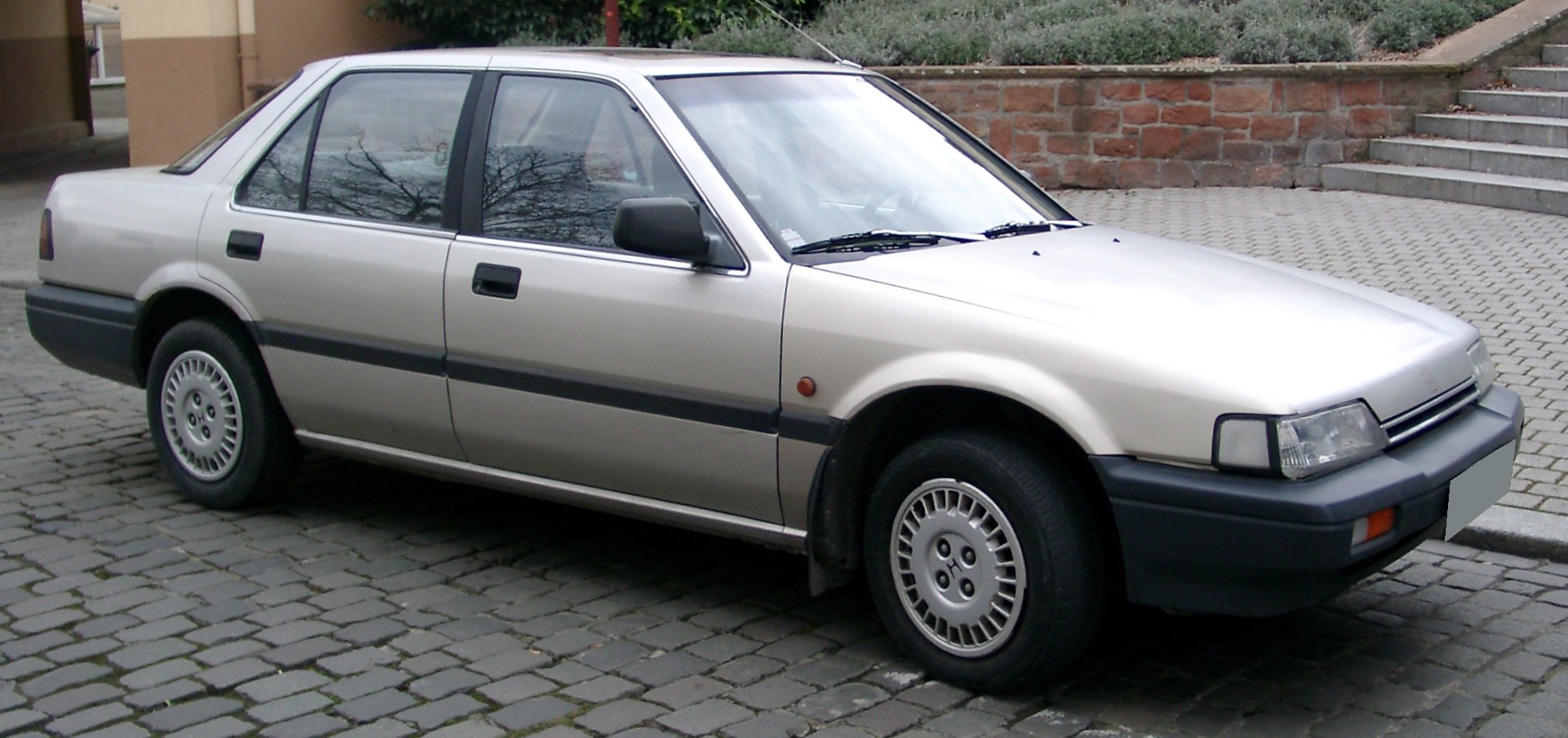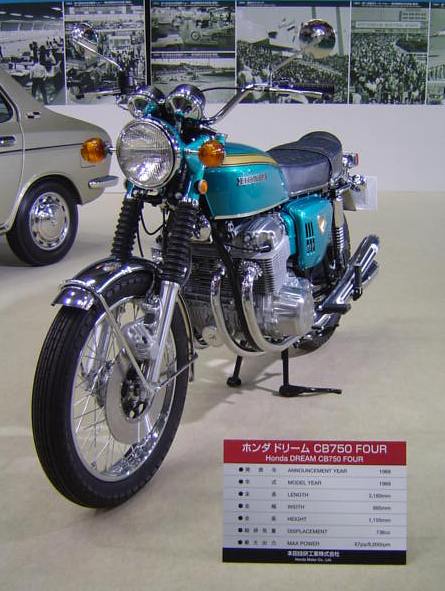|
Hondamatic
:''See also list of Honda transmissions for other Hondamatics'' The Hondamatic (also called the H2) was Honda's first semi-automatic transmission. It was produced from 1973 through 1988. The ''Hondamatic'' name continued to be used on fully-automatic transmissions from Honda. Design and Application The original Hondamatic, like all following Honda automatics, featured gears on parallel axes rather than planetary gears like most other automatic transmissions. The two gears for each ratio - one driving and the other driven - are in constant mesh and each ratio is engaged by a dedicated clutch connected to one of the ratio's two gears. The clutches are hydraulically controlled, applying oil pressure to the desired "gear". Shifting between forward gears was done by simply sliding the gear selector (actually a hydraulic valve) from 1 to 2. It did not automatically shift, but because of the torque converter, could be driven entirely in second gear. The Honda automobile torque conv ... [...More Info...] [...Related Items...] OR: [Wikipedia] [Google] [Baidu] |
Honda Accord
The , also known as the in Japan and China for certain generations, is a series of automobiles manufactured by Honda since 1976, best known for its four-door sedan variant, which has been one of the best-selling cars in the United States since 1989. The Accord nameplate has been applied to a variety of vehicles worldwide, including coupes, station wagons, hatchbacks and a Honda Crosstour crossover. Overview Since its initiation, Honda has offered several different car body styles and versions of the Accord, and often vehicles marketed under the Accord nameplate concurrently in different regions differ quite substantially. It debuted in 1976, as a compact hatchback, though this style only lasted through 1989, as the lineup was expanded to include a sedan, coupe, and wagon. By the sixth-generation Accord at the end of the 1990s, it evolved into an intermediate vehicle, with one basic platform but with different bodies and proportions to increase its competitiveness against ... [...More Info...] [...Related Items...] OR: [Wikipedia] [Google] [Baidu] |
Honda CB750A
The Honda CB750 is an air-cooled, transverse, in-line-four-cylinder-engine motorcycle A motorcycle (motorbike, bike; uni (if one-wheeled); trike (if three-wheeled); quad (if four-wheeled)) is a lightweight private 1-to-2 passenger personal motor vehicle Steering, steered by a Motorcycle handlebar, handlebar from a saddle-style ... made by Honda over several generations for year models 1969–2008 with an upright, or Types of motorcycles#Standard, standard, riding posture. It is often called the original Universal Japanese Motorcycle (UJM) and also is regarded as the first motorcycle to be called a "superbike". The CR750 is the associated works racer. Though other manufacturers had marketed the transverse, overhead camshaft, inline four-cylinder engine configuration and the layout had been used in racing engines prior to World War II, Honda popularized the configuration with the CB750, and the layout subsequently became the dominant sport bike engine layout. The CB750 i ... [...More Info...] [...Related Items...] OR: [Wikipedia] [Google] [Baidu] |
Honda CB400T
The Honda CB400T is a range of motorcycles built by Honda. In the United Kingdom it was known as the Dream, whereas in the United States it was known as the Hawk. A Honda CB250T version was also available in some markets including the UK and Australia for licensing reasons.In Japan, it is also called "Babu(バブ)" because of its unique exhaust sound. Background The model was the successor to the ageing twin cylinder CB360 and the highly regarded, but expensive for the 400 cc class, four-cylinder CB400F. The CB400T has two fewer cylinders than its CB400F predecessor and although the press was initially skeptical of it, reviews stated that it was a worthwhile successor and more than capable of competing with contemporary rivals. Its overhead camshaft air-cooled parallel-twin had been completely redesigned, with a chain drive that operated three valves per cylinder, two for intake and one for exhaust. It differs from rival manufacturers 400 cc twin-cylinder models beca ... [...More Info...] [...Related Items...] OR: [Wikipedia] [Google] [Baidu] |
Semi-automatic Transmission
A semi-automatic transmission is a multiple-speed Transmission (mechanics), transmission where part of its operation is Automation, automated (typically the actuation of the clutch), but the driver's input is still required to launch the vehicle from a standstill and to manually change gears. Semi-automatic transmissions were almost exclusively used in motorcycles and are based on conventional manual transmissions or sequential manual transmissions, but use an automatic clutch system. But some semi-automatic transmissions have also been based on standard hydraulic automatic transmissions with torque converters and Epicyclic gearing, planetary gearsets. Names for specific types of semi-automatic transmissions include ''clutchless manual'', ''auto-manual'', ''auto-clutch manual'', and ''paddle-shift'' transmissions. These systems facilitate gear shifts for the driver by operating the clutch system automatically, usually via switches that trigger an actuator or servomechanism, servo, ... [...More Info...] [...Related Items...] OR: [Wikipedia] [Google] [Baidu] |
List Of Honda Transmissions
Honda has long built nearly all of its own automobile transmission (mechanics), transmissions, unlike many other automobile manufacturers which often source transmissions from external sources. The most notable exception was in 2014, when Honda decided to forgo an in-house designed transmission and chose the ZF 9HP transmission for their Acura TLX V6 model, later extending the offering of the ZF transmission to the Acura MDX, Honda Odyssey (North America), Odyssey, Honda Pilot, Pilot and Ridgeline. However, there have been reports of problems with ZF transmissions and Acura recalled its 2015 TLX models. ZF has attributed most of these problems to software issues. Automatic/Semi-automatic transmissions Most of Honda's automatic transmissions are unusual in that they do not use planetary gears like nearly all other makers, however, Honda has recently introduced (2017) an all-new, in-house designed 10-speed automatic that uses planetary gears. Honda's older transmissions such as the ... [...More Info...] [...Related Items...] OR: [Wikipedia] [Google] [Baidu] |
Honda CM450A
The Honda CM450A is a motorcycle made by Honda in 1982 and 1983. It was based on the Honda CB400, CB400 and Honda CM400, CM400 models (1978–1981), especially the CM400A Hondamatic (1980–1981). It had a SOHC Straight-twin engine, parallel twin engine with two carburetors and a two-speed transmission with a torque converter. It was not a full automatic, however, because the rider had to manually shift between low and high. It is called automatic because there is no clutch required due to the torque converter, and shared the Hondamatic trade name with Honda cars that had true automatic transmissions. The chain-driven CM450A had a top speed of and weighed . Both models had a front disc brake and a rear drum brake. The suspension consisted of two shock absorbers at the rear and Motorcycle fork#telescopic, telescoping shock-absorbing front forks. The fuel tank had a capacity. The exhaust was routed through a separate pipe and baffle on each side of the motorcycle, although both exh ... [...More Info...] [...Related Items...] OR: [Wikipedia] [Google] [Baidu] |
Honda City AA
The first-generation Honda City (Honda Jazz in Europe) was a subcompact hatchback produced by Japanese automaker Honda and aimed mainly at the Japanese domestic market. Referred to as having a "Tall Boy" body style by Honda, it was available in a number of versions, some of which were sold abroad. First introduced in November 1981, it carried the model codes AA for standard models, VF for vans, and FA for the wide-track Turbo II and Cabriolet. In Japan, it was sold at the Honda Clio dealership sales channel. History While the City's layout was traditional for its category, with front-wheel drive and a transversely mounted engine, its relatively upright seating arrangement was innovative, creating legroom comparable to larger cars. This, combined with class-leading fuel economy, led to it being a rapid and considerable success in the Japanese domestic market. The engine was the CVCC-II four-cylinder Honda ''ER'' engine, specifically designed for the City. It was also availa ... [...More Info...] [...Related Items...] OR: [Wikipedia] [Google] [Baidu] |
Honda Acty
The is a series of cabover microvans and kei trucks produced by the Japanese automaker Honda from 1977 to 2021, designed for the Japanese domestic market (JDM). "Acty" is short for "Activity". The Acty's primary competitors were the Subaru Sambar, Suzuki Carry/Every, Daihatsu Hijet, Mazda Scrum, Nissan NT100/NV100 Clipper and the Mitsubishi Minicab. History The Acty range is designed to be economical, agile work vehicles, and generally lack luxury options, although air conditioning and power steering are available along with various trim, decoration, and customization options. The first generation was produced from 1977 to 1988 (model series TA, TB, TC, VD, VH). The second generation truck's years were 1988-1999 (model series HA1, HA2, HH1, HH2 with the E05A engine; HA3, HA4, HA5, HH3, HH4 with the EN07A engine) - the Street derivative continued in production until 2011. The third generation's years were 1999-2009 (model series HA6, HA7, HH5, and HH6, with the E07Z en ... [...More Info...] [...Related Items...] OR: [Wikipedia] [Google] [Baidu] |
Honda Civic
The is a series of automobiles manufactured by Honda since 1972. , the Civic is positioned between the Honda Fit/Honda City, City and Honda Accord in Honda's global passenger car line-up. The first-generation Civic was introduced in July 1972 as a two-door fastback sedan, followed by a three-door hatchback that September. With a 1,169 cc transverse engine and front-wheel drive, the car provided good interior space despite overall small dimensions. Initially gaining a reputation for being fuel-efficient, reliable and environmentally friendly, later iterations have become known for performance and sportiness, especially the Civic Si, SiR, and Honda Civic Type R, Type R versions. The Civic has been repeatedly Rebadging, rebadged for international markets, and served as the basis for the Honda CR-X, the Honda CR-X del Sol, the Honda Concerto, Concerto, the first generation Honda Prelude, Prelude, the Civic Shuttle (later to become the Honda Orthia, Orthia) and the Honda CR-V, ... [...More Info...] [...Related Items...] OR: [Wikipedia] [Google] [Baidu] |
Honda Prelude
The is a sport compact car produced by the Japanese company Honda. It was once produced over five generations from 1978 to 2001. It is planned to be reintroduced in 2025. For the first five generations, as a two-door coupe loosely derived from the Accord, the Prelude was the first Honda to feature a moonroof, a feature that remained standard equipment throughout its production. The Prelude was used by Honda to introduce the Japanese Honda retail sales chain '' Honda Verno,'' with the international release of the model following shortly after. The Prelude's manufacture concluded in 2001 on introduction of the fourth-generation Integra. The Prelude name was originally trademarked by Toyota, but was amicably given to Honda for use. The Prelude's nameplate aligned with a series of music-themed nameplates in use by Honda, including the Accord, Quintet, Concerto, Jazz, and Ballade. __TOC__ First generation (1978) On 24 November 1978, the Prelude was launched to the Japanes ... [...More Info...] [...Related Items...] OR: [Wikipedia] [Google] [Baidu] |
Honda CM400
The Honda CM400 is a street bike produced by the Honda Motor Company from 1979 to 1982, part of a series of motorcycles with the prefix 'CM' using various engine capacities. It was a precursor to the Honda Rebel series of motorcycles. It was equipped with electric start and electronic ignition. Models included the CM400A (Semi-automatic or " Hondamatic"), CM400C (Custom), CM400E (Economy) and CM400T (Touring). The CM400C was produced only in 1981, making it one of the rarer models. The Honda CM series all generally resembled the older-style flat-seat bikes from the 1960s and 1970s, with the exception of a slightly raised passenger area seat and small plastic fairings for the battery and electrical. These are "standard" style motorcycles but do have some elements of the cruiser (stepped seat, increased fork angle, extra chrome). The CM400 series includes only a speedometer and three indicator lights (neutral, oil pressure, high beam) with a tachometer for the C and T models. Th ... [...More Info...] [...Related Items...] OR: [Wikipedia] [Google] [Baidu] |





